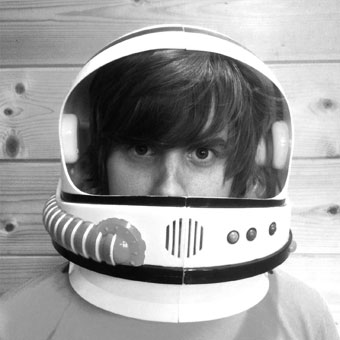Platforms
User experience designers are increasingly being tasked with working across new and emerging platforms, so Platform day is your opportunity to immerse yourself in the latest advances around mobile, desktop and Smart TV experiences. Our speakers will share insights on seeing each platform not as a series of separate devices, but as a holistic whole.
Registration
Content in a Zombie Apocalypse Session
Friends, a zombie apocalypse is upon us: an onslaught of new mobile devices, platforms, and screen sizes, hordes of them descending every day. We’re outmatched. There aren't enough designers and developers to battle every platform. There aren’t enough editors and writers to populate every screen size. Defeating the zombies will require flexibility and stamina—in our content. We'll have to separate our content from its form, so it can adapt appropriately to different contexts and constraints. We’ll have to change our production workflow so we’re not just shovelling content from one output to another. And we’ll have to enhance our content management tools and interfaces so they're ready for the future. Surviving the zombie apocalypse is possible. In this talk Karen will explain how: by developing a content strategy that treats all our platforms as if they’re equally important.
Read moreWorking with Atomic Design
Over the past few years, we’ve seen the web community create style tiles, element collages, style guides, pattern libraries, and a slew of other tools in order to break interfaces down to their atomic elements. Our interfaces are going more places than ever before, so this shift is essential to help us better understand what our websites consist of in order for us create smart, scalable, maintainable designs. This session will introduce atomic design, a methodology for creating robust design systems, and discuss how UX designers can use a pattern-driven workflow to make designing for our multi-device Web without going mad.
Read moreBreak
One App, Two Apps: Avoiding the Pitfalls of Screens Big & Small
Patrick Haney & Jenna Marino, the husband/wife team at Hanerino, take you through their Dr. Suess-inspired journey of designing for screens big and small. During their talk, they’ll touch on best practices and pitfalls to avoid when working on applications across smartphones, televisions and of course the web. Using a highly visible application as an example, Patrick & Jenna will review their process and tips for designing a successful, cross-platform product for multiple devices.
Our Wearable Future: Opportunities and Challenges for Wearable Technology
It’s hard to dispute that wearable technology is being lauded as the next big thing. With predictions that the wearable technology market will generate USD22.9 billion in revenue by 2020, it's difficult to ignore all the hype surrounding wearables today. However, despite the seemingly limitless opportunity of this emergent technology space, new and innovative wearable products and services are in short supply. Businesses, technologists and designers alike are struggling to make sense of this new and challenging design space.
Interacting with a World of Connected Objects
The network that over the last couple of decades has connected people to one other, to information and to online entertainment is now spreading into the physical world, bringing hundreds of millions of new objects online. Within a few years it may be impossible to buy an electrical device that does not come—by default—with internet connectivity and some kind of online or app-based service layer.
Lunch
From Second Screen to First Screen: Design for TV and Mobile
Application design is all grown up, which means a designer’s job is just that much harder. How do you create an interface for 50" televisions that scales to a 5" smartphone? Hear firsthand from two seasoned designers who have worked through this scenario and learn how to design for televisions and their second screen companions.
Read moreResponsive Patterns
Please bring a laptop with you
Creating adaptive interfaces is challenging, but thankfully the Web community is hard at work creating flexible, downright innovative design patterns. In this workshop, we’ll look at how to handle anything you can put onto a Web interface in a responsive way. We’ll cover important layout patterns, navigation both simple and complex, conditional loading, the ever-confusing topic of responsive images, tricky elements like data tables and maps, forms, and a whole lot more!
Read moreRedesigning Star Wars
Star Wars was originally released in 1977, long before audiences had the daily deep engagement with computers that we have today, and long before interaction design was its own profession. What was mind-blowing technology back then can seem quaint today. How would you, as a professional designer, do it over again? (And let’s answer this question before Abrams’ reboot comes out.)
Read moreSwift Workshop
Please bring a laptop with you
Finally, a language that designers can understand. Swift is a modern language that is familiar to Web designers using a syntax that is similar to Javascript. In this introduction course, you’ll learn how to code user interfaces in Swift Playground, re-create a design in Storyboards layer by layer and code simple animations. You’ll also be able to prototype quickly and apply modern iOS 8 animations using spring and gestures. Most importantly, learn how to collaborate better with developers by getting familiar with the same tools, frameworks and language that they use.
Read moreGetting Beyond the Watch: How to Begin Designing Wearable Experiences
Wearables are being lauded as the next technology game changer; the next technology frontier. Yet designing technology experiences that are worn on the human body presents a host of challenges for UX professionals. While wearable technology is a design space ripe with opportunity, many creatives are left asking the same question: Where do I begin?
Read moreAn introduction to user centred design and the connected home
This workshop delves into the core principles of user centred design and how it can help designers, developers and product owners build better experiences for their users. Our subject this year takes on the IoT movement. We're aiming to take you out of your comfort zone and embrace the physical world by designing a web/smartphone app for an internet connected dishwasher.
Read moreSpeakers
- Adam Connor
- Andrew Pairman
- Angel Anderson
- Anthony Mann
- Brad Frost
- Cecilia Weckstrom
- Chris Noessel
- Cyd Harrell
- Danny Bluestone
- Des Traynor
- Google UX Mentors
- Jeff Patton
- Jenna Marino
- John Willshire
- Jon Kolko
- Julie Zhuo
- Karen McGrane
- Kim Goodwin
- Meng To
- Patrick Haney
- Rachel Hinman
- Sophie Dennis
- Stephen Anderson
- Steve Cable
- Tom Coates








